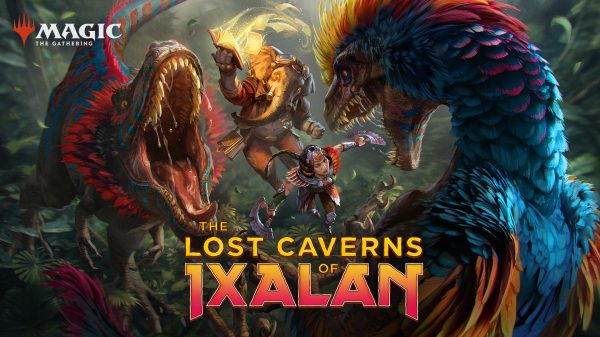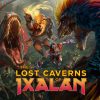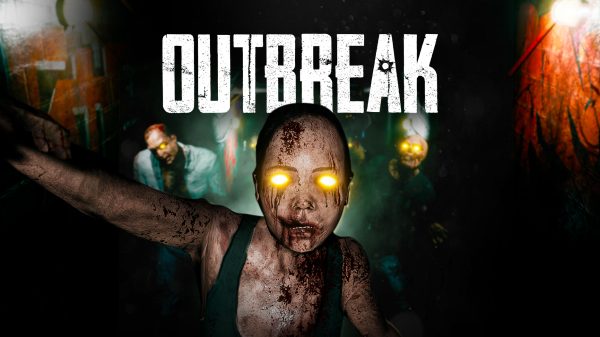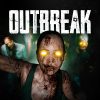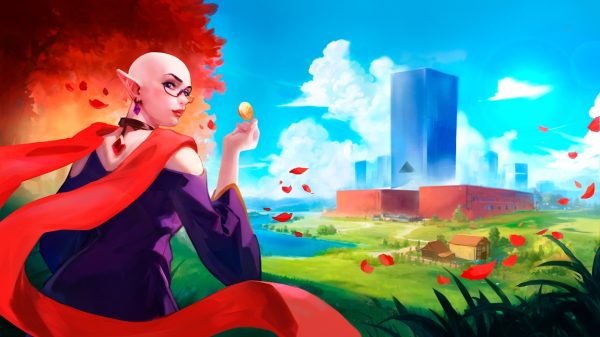If you had been perusing the various indie game booths at PAX Australia this year, you likely would have noticed a little RPG amongst the crowd with a heroic dice at the forefront. Yours truly certainly did, and quickly became enamoured with Spellsided and its unique take on the turn-based RPG. Melbourne’s Mass Transit Interactive are the team behind the adventure, and it’s been a flurry of activity for the crew of late.
Having wrapped up PAX and pulled in all the feedback they could get their hands on, the team launched but quietly cancelled a Kickstarter campaign when it became apparent they need a little more time to cook. That’s when the decision was made to rebrand the project.
“When we originally chose the name ‘Hexaquest’ for our little dice game, we had no idea we’d gain such an audience so quickly,” the team said, “The name was always a placeholder for us, so when we found out that there’s a board game of the same name that’s existed long before we even thought of our game, that was all the motivation we needed to brainstorm a new name that better captures the essence of our game.”
Which leads us to Spellsided, an exciting new name and direction for the team, and we got the chance to ask some deep and meaningful questions about the past, present and future of Spellsided with Creative Director Dion Spyropoulos.
WellPlayed: For the uninitiated, what is Spellsided?
Dion Spyropoulos: Spellsided is a ‘dice-builder RPG’ where you play as a fully-customisable magical die named Hex! In this surreal fantasy representation of a board games room, you have been discarded by the Gods of the Tabletop and must find your way back to the top. On your journey, you’ll find an abundance of spells and upgrades to customise your die with, and an abundance of game pieces both friend and foe to help or hinder your journey!
The game plays out in this brainy grid-based turn-based sort of gameplay where every step is a puzzle of your own design, based on the spells you’ve chosen and the position you’ve ended up in. It’s all a process of rolling around, rotating your die to get the spell you want in the place you want.
WP: Music plays such a big part in how you came together as a crew. Can you tell us a little bit about Mass Transfer Interactive’s origins and how those lessons in music have helped shape Spellsided?
DS: Yep! So Ango, Kris, and I all met in uni studying music composition, and the thing that drew all of us to that was our love for game music and our dreams to be game composers. But apparently the easiest way to get into making game music is to just make your own game, so that’s where Spellsided started.
Having an all-audio dev team is super handy. Audio can easily be sidelined in game development, often being relegated entirely to one person for indie teams, with a communication barrier between the core dev team and audio team. But for us, the game’s sound and music is something we all have the joy of participating in. As the creative director of the game, I also wear the hat of ‘audio director’. I start by making concepts and finding the ‘sound palette’ for a certain area or moment, then give that to the team for them to do their own experimentation in their own styles. Having a shared discipline that we have a shared history in has really set the foundations for us as collaborators. It’s good to have some crossover in our work so we’re not all off in our own worlds wearing our different hats.
WP: Spellsided is such a unique concept, a clever spin on the turn-based adventure. Where did the idea originate and when did you know during its creation that it would be your first major project?
DS: Spellsided started when Ango and I did GMTK’s ‘Roll of the Dice’ game jam in 2022. As you can imagine, the concept became far too ambitious for a game jam. The original idea was a ‘dice-builder roguelike’ where you upgrade your die with random spells you find in procedurally generated levels, but we quickly found that procedural generation doesn’t work as well for a game like this where every step is a puzzle. So we instead went for a puzzle RPG approach, exploring a designed world with open-ended obstacles requiring creative solutions according to your unique spell loadout.
That puzzle RPG pivot is where we started to realise, ‘Oh this game could go deep… Let’s see where it goes.’ We’d just come out of uni so we had plenty of time to explore the extent of the game’s possibilities, and it just kept surprising us. The response from playtest sessions with friends was a big factor too, seeing how positively people respond to the concept.

No rickrolling allowed
WP: There’s some obvious inspirations here, a touch of D&D and turn-based classics, but what other inspirations formed the basis for Spellsided?
DS: It all started with me falling in love with deck-builders like Slay the Spire and Inscryption. The way simple core mechanics are expanded upon and synergised in such a robust way, giving the player full reign over how they want to play, is something that heavily inspired our fully-customisable ‘dice-building’ system.
In terms of our particular approach to turn-based gameplay, we took extensive notes from Crypt of the Necrodancer – a turn-based game that barely feels turn-based due to how seamless its turn system is. The experience of having actions be executed through movement was another key inspiration for our game’s spellcasting system.
But my favourite reference game is one which we discovered sort of retroactively. Bloxorz (or “that game from CoolMathGames”, as our commenters have called it) should have been an obvious reference game for a puzzle game that revolves around revolving. Reliving the nostalgia of playing Bloxorz definitely taught us a few tricks for designing our puzzles.
WP: What was the biggest challenge in balancing the dice building aspect of Spellsided? Are there any ideas you’re still working on in terms of items or weapons?
DS: The main balancing act has been making sure the player has the freedom to customise their playstyle however they like without letting them make the game boring for themself. For instance, we had to limit the quantity of each spell the player receives so they can’t just give themself six of the same spell and never think about their faces again.
The ‘spell-stacking’ system we’ve devised, where the player levels up by upgrading their faces to host stacks of more and more spells, has also been quite a knot to untangle. Some types of spells simply cannot be stacked with others, so it took us a while to design a sufficiently complex system of limitations for different types of spells while still giving the players ample room for experimentation.
So far, however, we’ve been pleasantly surprised by how well the 13 spells in our demo work together without trivialising the game or making it boring. But in the future, where players can stack up to 6 different spells on their sixth face… yeah, that is going to be an absolute beast to balance, but I’m keen for the unique ways play testers will break our game!
WP: What made you decide on an open-ended level design instead of pre-determined puzzles?
DS: Great question! We really wanted players to go wild with customising their die, trying crazy stuff and finding surprising combos and synergies, so the level design needed to account for that. We couldn’t have too many bottlenecks where the player needs this or that specific spell to progress. So we took this more open-ended approach to level design to allow for multiple right answers. We also found that exploration is a very interesting experience with this game system, where the gameplay is so heavily tied to movement and positioning.
That being said, there are some very interesting pre-determined puzzles that can be designed with this system, so we’ve been playing with that process in the form of isolated ‘challenge rooms’ where the player is given a set loadout of spells to complete a puzzle.
WP: Were there any pitfalls you came across during the initial design process?
DS: We had an issue that most game devs have when treading new territory, which is that difficulty is hard to gauge when you can’t rely on familiarity. Some players would struggle for ages on puzzles that others cleared in seconds. So far just giving the player more wiggle room and stripping away unnecessary/overly-punishing blockers has been the most useful approach to fix this.
Level design can also be a bit of a juggle at times since even when an obstacle allows multiple solutions, it takes some extra testing to ensure that all of those solutions are actually fun. But having a playtest-oriented process and getting frequent community feedback has helped us cover plenty of bases here.

Expect plenty of devilish puzzles to solve in your own way
WP: So far you’ve shown off Domino Den, full of crumbling ruins inspired by dominos. Can you give us a hint or two as to some of the other worlds in development?
DS: I am so glad you asked because the answer is yes and I can’t stop thinking about them!
The next major area after the Domino Den is CASINA CITY! It’s a land of cards, coins, and chips, all hustling for their time on the Tabletop. The Jack of Clubs boss from our Steam demo hails from here, and you can find (most of) the rest of the deck here too…
Our next leg of development after we finalise the Domino Den will be focused entirely around Casina and I am so excited for it. Lots of fun spells and characters.
WP: What was the feedback like during the Pax Australia weekend? Did any players surprise you with their strategies?
DS: The reception was incredible! All three stations at our booth were occupied for almost the entire three days. People had a lot of fun unravelling the game and familiarising themselves with it.
We had a few players who were able to find a looping 8-move sequence they could use against the Jack of Clubs boss to lock him into an endless pattern while they damaged him. A lot of them asked us, ‘Uhh is this okay?’ while we were like, ‘YES that is awesome.’ Like, yes it trivialises the encounter, but you have to find the loop first and be in the right position for it with your spells. It felt like some high-level strategy that speedrunners could exploit while 95% of players will never see it.
WP: You’ve got a roadmap in place for 2026, what challenges do you see going forward in trying to reach that goal?
DS: Weirdly, I’d say scope could be a tricky thing to manage in the future! The Domino Den area in the demo was meant to just be 1-2 hours of content, but it ended up being 3-4 hours and it took a massive effort to finish it in time for Pax Aus. Which is funny because I was truly concerned at one point that the demo wouldn’t have enough content! As a dev, I can finish the demo in less than half an hour so 1-2 hours for players felt like a reasonable estimate. But as I said, the familiarity factor can really effect how easily you breeze through the game. So hopefully the 12-16 hours of gameplay planned for the full game doesn’t get out of hand! Using the demo as a scope reference will definitely help with that.
A big thank you to the team at Mass Transit Interactive for their time. You can wishlist Spellsided on Steam now.
Known on the internet as Kartanym, Mark has been in and out of the gaming scene since what feels like forever, growing up on Nintendo and evolving through the advent of PC first person shooters, PlayStation and virtual reality. He'll try anything at least once and considers himself the one true king of Tetris by politely ignoring the world records.


























